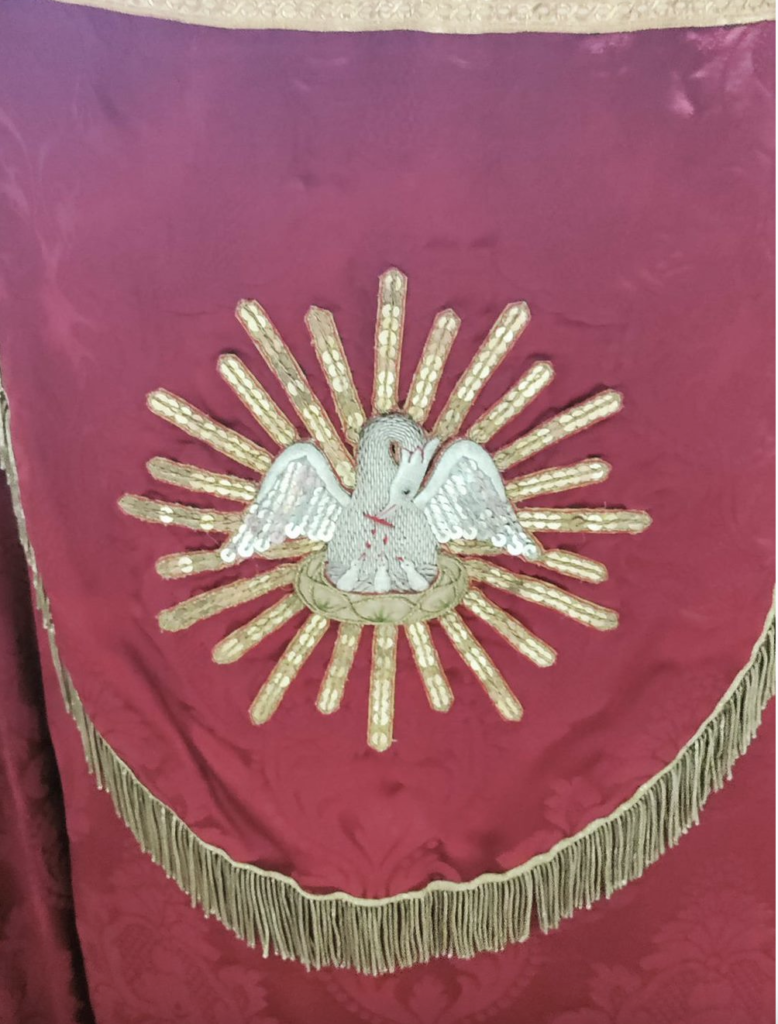
On Sunday 7th May 2023 St Deiniol’s held a special service to mark the Coronation of King Charles III. As it was such a special service, the clergy team wore three of the beautiful copes which our church owns which are only worn on important occasions. A cope is a liturgical vestment similar in style to a cape or cloak, open in front and fastened with a band or clasp.
Several people remarked on the embroidery on the back of the cope which Canon Andrea wore. It features an embroidered white bird, a pelican, which appears to be pecking at its own breast and causing its blood to drip down to three young birds. Rather a grizzly scene but what does it mean?
The image of the pelican piercing its own breast comes from the belief that the pelican, especially in times of famine, pierces its own breast and feeds its young with its own blood. In medieval times this came to be seen as a metaphor for Christ’s sacrifice. The first reference to this seems to have been by the 12th century theologian, Peter Lombard, and it went on to become a popular symbol in Christian art and literature. The clergy stall in St Deiniol’s has carved bench ends which feature the “pelican of piety”. One of these goes back to the 16th century but the matching bench end was replaced following the arson attack in 1857.
It is of course just a legend. There is no evidence that pelicans do any such thing! There is speculation that it could well have derived from the pelican’s red tipped beak and very white feathers. Pelicans often stand with their beaks resting on their breasts.
Although it is clear that this is just a legend we often see images of the pelican such as the one on the back of our cope: only a legend but one that has led to some beautiful works of art. Rev’d Canon Andrea Jones
